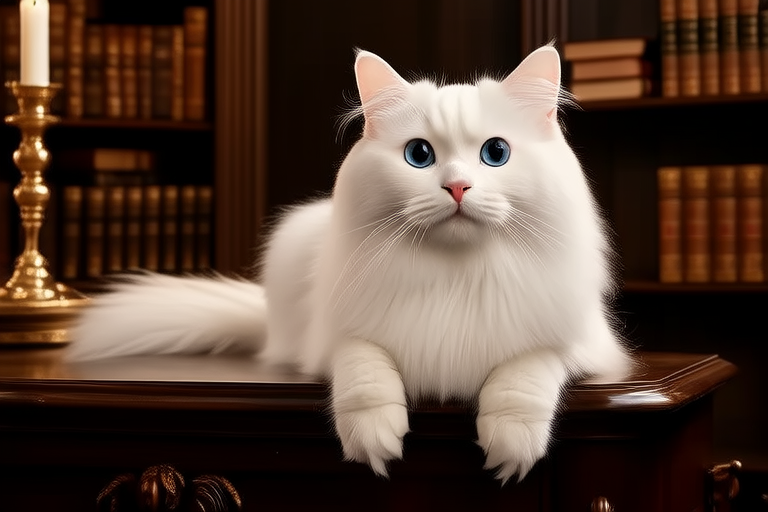The Turkish Angora: A Royal Feline with a Rich History
The Turkish Angora is one of the oldest known cat breeds, with roots tracing back to ancient times in what is now modern-day Turkey. This elegant and graceful cat has captivated human hearts for centuries, earning a place in both folklore and royal courts. In this article, we will explore the fascinating history, physical attributes, temperament, and cultural significance of the Turkish Angora, as well as its recognition by major cat organizations.
Origins and Historical Significance
The Turkish Angora hails from the Anatolian region of central Turkey, specifically around the city of Ankara (formerly known as Angora). The breed’s name reflects its origin, with “Angora” referring to the city and “Turkish” denoting its nationality. These cats have been mentioned in historical texts and art since at least the 16th century, often depicted in paintings and sculptures alongside royalty and nobility. The Turkish Angora’s presence in these records underscores its esteemed status and association with wealth and power.
In addition to its royal connections, the Turkish Angora also played a significant role in Turkish mythology. According to legend, these cats were believed to be descendants of the goddess Bastet, who was worshipped by the ancient Egyptians. The Turkish Angora’s striking appearance and graceful demeanor only added to its mystique, making it a symbol of elegance and grace.
Physical Characteristics
The Turkish Angora is renowned for its striking appearance, which includes a slender yet muscular build, long legs, and a tail that is typically carried high and arches over the back. Their large, expressive eyes are usually green, blue, or amber, though it is not uncommon for them to have heterochromia, where each eye is a different color. This unique feature contributes to their captivating charm and adds to their already regal appearance.
One of the most distinctive features of the Turkish Angora is its luxurious, silky coat. The breed comes in a wide range of colors and patterns, from solid white to tortoiseshell and tabby. The coat is generally medium in length, but it can vary depending on the season. During the winter months, the coat becomes thicker and longer to provide insulation against colder temperatures, while in the summer, it sheds excess fur to stay cool. Despite its plush appearance, the Turkish Angora’s coat requires minimal grooming, making it an ideal choice for those seeking a low-maintenance companion.
Temperament and Personality
Beyond their striking looks, Turkish Angoras are highly intelligent and curious creatures. They are known for their playful and affectionate nature, often forming strong bonds with their human companions. These cats are social animals that thrive on interaction and enjoy being involved in their owners’ daily activities. They are quick learners and can be trained to perform tricks or respond to commands, making them an entertaining and engaging pet.
Turkish Angoras are also known for their agility and athleticism. They are natural climbers and jumpers, often scaling heights that would challenge even the most experienced human gymnast. Their curiosity often leads them to investigate every nook and cranny of their environment, making them excellent hunters. While they may be independent thinkers, Turkish Angoras generally prefer to be in the company of their human families, often following their owners from room to room and seeking out attention whenever possible.
Cultural Significance and Preservation Efforts
The Turkish Angora holds a special place in Turkish culture, and efforts have been made to preserve the breed’s integrity and ensure its continued existence. In the early 20th century, the Ankara Zoo in Turkey began a breeding program aimed at maintaining the purity of the Turkish Angora lineage. This initiative helped to prevent the breed from becoming extinct and ensured that future generations could continue to appreciate the beauty and grace of these cats.
Today, the Turkish Angora is recognized by several major cat organizations, including The International Cat Association (TICA) and the Cat Fanciers’ Association (CFA). These organizations have established breed standards and guidelines to ensure that Turkish Angoras meet specific criteria regarding their physical appearance, temperament, and overall health. By adhering to these standards, breeders can help maintain the breed’s unique characteristics and ensure that future generations of Turkish Angoras continue to embody the qualities that have made them so beloved.
Enduring Allure and Mystique
The Turkish Angora remains an enduring symbol of elegance and grace, captivating the hearts of cat enthusiasts around the world. Its rich history, striking appearance, and playful yet intelligent nature make it a truly special breed. For those interested in a unique and historically significant feline companion, the Turkish Angora offers an unparalleled experience. Whether you’re drawn to its royal heritage, its captivating coat, or its charming personality, there’s no denying the allure of this remarkable breed.
As we look to the future, it is important to continue supporting the preservation and recognition of the Turkish Angora. By doing so, we can ensure that this breed continues to thrive and that future generations can enjoy the company of these magnificent cats. Whether you’re a seasoned cat lover or simply curious about the world of felines, the Turkish Angora offers a fascinating glimpse into the rich tapestry of our shared history and the enduring bond between humans and their animal companions.
